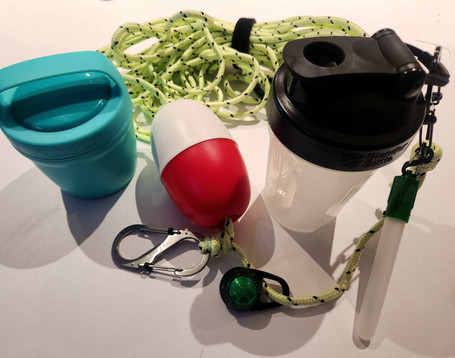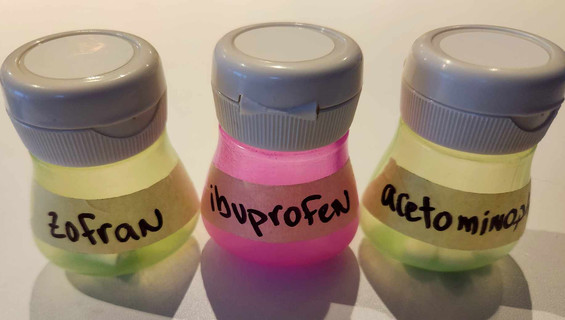Gearing up: feed kit
- Nadine Bennett

- Aug 29, 2023
- 4 min read
Updated: Jul 31
The following is part of a series of posts that details the planning and packing we're doing for my first marathon solo swim, In Search Of Memphre 40km. I'm documenting our preparations so that others might benefit in their own planning or contribute new ideas based on their own past swims - building community and sharing info is so important!
My feed kit has everything in it the support crew need to feed me, keep me hydrated and medicated if needed on the swim. Here's the stuff on my feed kit gear list:
Let's start with the feed plan itself. All of my previous swims have been kayak supported, but this time I'll be feeding off a pontoon boat and for a much longer period of time. Not only do we have to have ALL THE STUFF, it's also important that crew know what to do with it. I created a feed plan document - on one side is what I will/might consume and what container to use to hand it to me, on the other side is what's all in my feeds and how to mix fresh feeds as needed. The document is laminated, and I made 2 copies in case one goes flying overboard in the middle of the night. Light reading for Memphre, I suppose...

So...what is the plan, exactly? I tried to keep it simple:
we're doing warm feeds at night, we'll decide daytime based on how I feel
8-9hrs of feed will be pre-mixed, so that no one has to mix anything in the dark
the pre-mixed feeds will go into the thermal bottles - which yes, I tested last weekend for average hourly heat loss and now know exactly how hot to put fluids in and in what sequence so that they are perfect drinking temp at each feed stop over the 8-9hrs
after 8-9hrs, the feeds fall into 3 categories, which the crew will now have to mix up as we go: "regular feed" (same as what I've been drinking all night), "caffeine feed" (= regular feed plus small 30mg dose of caffeine per serving), and "electrolyte water" (= no fuel source, just electrolytes, for when I feel too full for feeds or need a change). I'm a little hesitant with the use of caffeine, it doesn't affect quite in the same way as most people, so we'll see how things go and if I need it
I am bringing other warm beverages (protein shakes, coffee, tea, hot chocolate) and some real food (wraps with PB+J), blackberries, gummies, etc. I typically don't use solid food on my swims, but I'm bringing them in case I need a change or want to start adding in small amounts of sugars later in the swim.
After the 8-9hr mark, the crew will have to mix new feeds for me, but everything has already been pre-measured for them and placed into individual ziplock bags. They just have to dump the contents of a bag into the right bottle, add 24oz water, and shake! If we end up doing warm feeds during the day, there's a jet boil on the pontoon boat to heat water, but they'll have to mix it cool enough so that I can drink it without burning my mouth (46C/115F).
There's no touching permitted, so the crew will use a feed rope to hand me stuff. They'll pour a serving of the pre-mixed feed into the small black-top bottle (half full). For any food or treats, those will go into the green container. The rope has 2 clips, so both containers can be used at the same time if needed. The red/white buoy helps with visibility once the feed is dropped into the water, and the adventure light clip and wand are used during the night part of the swim, so that I can find the feed easily in the dark. Feed stops will start very focused at about 30 seconds each, but as time goes on I'll get tired and probably need a little human interaction, so I'm not terribly worried if the feed stops start to get a little longer, especially if weather conditions allow for it. It's an adventure, after all, not a race to the end.
I will likely need some meds on the swim, after awhile my arms will get achy and if it's windy my lower back might ache a little too. We're bringing liquid ibuprofen, that's my usual go-to, chewable acetaminophen just in case I need a bit more strength, and zofran for any nausea. I always pre-measure my med dosage and put it in little squeeze bottles as shown below, that way they are already portioned out. And, I pre-measure the total max allowable dosage, so that there's no risk of going overboard by accident. I really like this approach, I can suck back the meds quickly and the crew can pick up the empty bottle (or, if I'm feeling a little feisty, I'll throw it back at them).
And there you have it, all packed up and ready to go!





















Comments